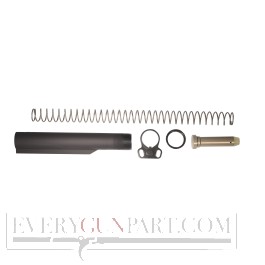At a loss with a new build and hoping for some help/insight with a failure to feed issue.
Weapon details:
AR-10 in .308 custom built rifle with Spikes Tactical matched receivers
16" proof research carbon fiber barrel with matching gas tube
Brownell's lightweight titanium CBG
VSeven A5 buffer tube
JP Enterprises captured spring with H2 buffer weights with A5 spacer
Spikes Tactical branded superlative arms adjustable gas block
LaRue two stage trigger
Magpul PRS Lite stock
Sil3ncerCo? 3 port muzzle brake Remaining small parts are VSeven titanium.
Description: Have gas wide open. Using 147 grain ammo (lightest load I will likely use). 9/10 times rifle cycles properly, pull trigger, goes bang. Able to manually lock bolt back.
1 in 10, fails to feed. 9/10 times fails to lock back on empty magazine. Issue is repeatable over 5 different malpul magazines. Tried swapping out from medium to light spring, peoblem continues. Ammo ejects at 3 o'clock with lightest spring, around 3:30 with medium spring. Problems occur at same frequency with both springs.
Weapon details:
AR-10 in .308 custom built rifle with Spikes Tactical matched receivers
16" proof research carbon fiber barrel with matching gas tube
Brownell's lightweight titanium CBG
VSeven A5 buffer tube
JP Enterprises captured spring with H2 buffer weights with A5 spacer
Spikes Tactical branded superlative arms adjustable gas block
LaRue two stage trigger
Magpul PRS Lite stock
Sil3ncerCo? 3 port muzzle brake Remaining small parts are VSeven titanium.
Description: Have gas wide open. Using 147 grain ammo (lightest load I will likely use). 9/10 times rifle cycles properly, pull trigger, goes bang. Able to manually lock bolt back.
1 in 10, fails to feed. 9/10 times fails to lock back on empty magazine. Issue is repeatable over 5 different malpul magazines. Tried swapping out from medium to light spring, peoblem continues. Ammo ejects at 3 o'clock with lightest spring, around 3:30 with medium spring. Problems occur at same frequency with both springs.



